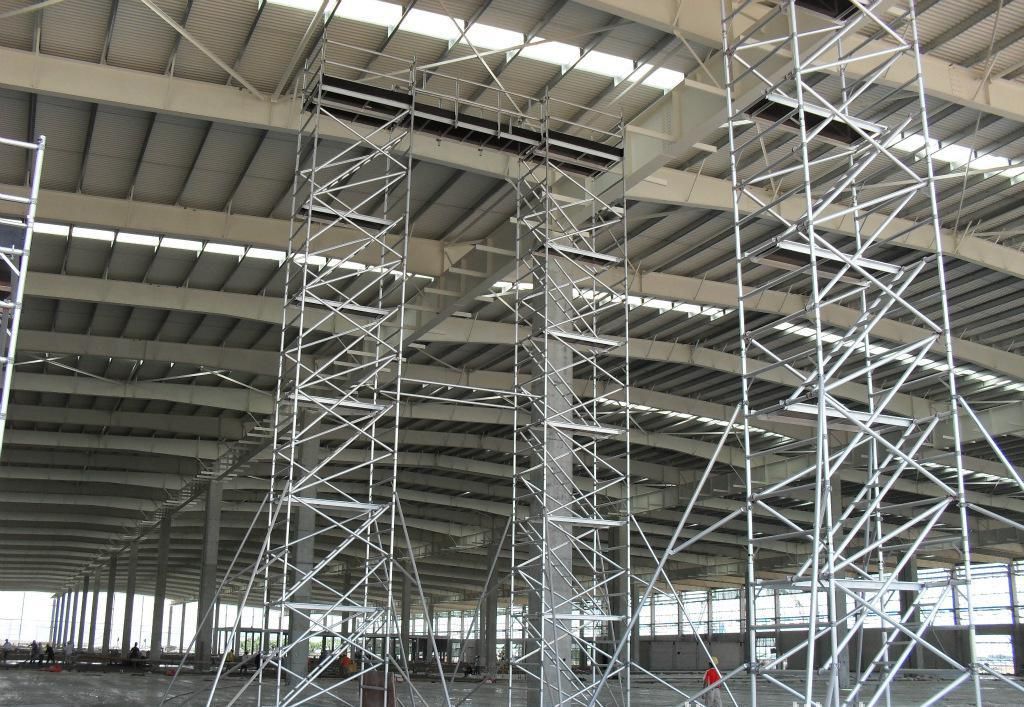
Publish Time: 2023-06-08 Origin: Site

Introduction: Aluminum scaffolding towers have become a popular choice in the construction industry due to their lightweight nature, versatility, and modular design. These towers consist of interconnected scaffolding frames, which are secured together using horizontal bars and inclined bars. Among the essential components of these bars are snap hooks that play a critical role in ensuring the stability and safety of the entire scaffolding tower. This article explores the significance of hook connections in aluminum scaffolding towers and highlights the advantages of welded snap hooks over punched connections.

(our welded snap hook)
1. Modular Design and Consistency: Aluminum scaffolding towers are designed with a modular approach, where each scaffolding frame shares the same width and height of rungs. This uniformity enables easy assembly and disassembly, providing flexibility in adjusting the tower's height and configuration to meet specific job requirements.
2. Consolidation and Stability: While the modular scaffolding frames form the basic structure of the tower, it is the horizontal bars and inclined bars that consolidate and secure the frames together. These bars distribute the load across the tower, ensuring stability and preventing any shifting or swaying during use. The integrity of these connections is crucial to maintaining a safe working environment.
3. Snap Hooks and Tight Connections: The horizontal bars and inclined bars feature snap hooks at both ends. These snap hooks are pivotal in tightly connecting two scaffolding frames. Through a mechanism of interlocking, the snap hooks latch onto the frames, ensuring a secure and snug fit. This connection eliminates any potential for looseness or misalignment within the tower structure.
4. Welded Snap Hooks vs. Punched Connections: The method of attaching the snap hooks to the horizontal bars and inclined bars is of utmost importance. Welded snap hooks provide a superior connection compared to punched connections. When the snap hooks are securely welded onto the bars, they become an integral part of the structure, effectively minimizing the risk of detachment or failure. Welding ensures a strong and durable connection that can withstand the dynamic loads and stresses encountered during use.
On the other hand, punched connections, where the snap hooks are merely attached through holes or slots, can be prone to loosening over time. Vibrations, repetitive use, or heavy loads may cause the hooks to become dislodged or compromised, resulting in an unstable scaffolding tower. Such instability poses serious safety risks for workers on the scaffold, as well as potential damage to surrounding structures.
(punched connected hook)
Conclusion: In conclusion, the hook connections in aluminum scaffolding towers play a vital role in maintaining the structural integrity, stability, and safety of the entire tower. The use of snap hooks at the ends of horizontal bars and inclined bars ensures a tight and secure connection between scaffolding frames, eliminating any looseness or misalignment. While both welding and punching connections are available, it is clear that welded snap hooks provide a more reliable and long-lasting solution. Opting for welded snap hooks enhances the overall safety and stability of the aluminum scaffolding tower, contributing to a secure and efficient work environment.
FOSHAN DRAGON STAGE
No.7,Xiaxi Industrial Area,Heshun,Nanhai District,Foshan,528241,Guangdong,China.
+86 136 3132 8997
